Home » Tire Patches vs. Tire Plugs: Which Is Better?
What are tire patches and tire plugs? Well, they are useful when you get a flat tire. In such cases, there’s a good chance that a minor repair can get you back up and running again quickly.
Three of the most common of these “minor repairs” are:
The first option, a tire plug, is cheap and fast to administer. Plugs work best when you’ve run over a nail or similar blunt object that punctures the tire and causes it to leak air. After the nail or sharp object is removed, the plug can be inserted into the hole to fix the leak. While plugs of the old days were problematic and served more as a band-aid type of repair than anything else, many plugs available today actually vulcanize to the tire to provide better stability.
Tire patchA patch, on the other hand, is considered to be a better quality tire repair. However, it’s a bit more laborious of a repair than a plug. Patching a tire actually consists of removing the tire from the rim and then using a die grinder to clean up a 2-inch diameter around the puncture to give the patch enough of an area to bond with. The patch is then pushed from inside the tire through the outside of the tire, sealed, and let dry.
The best modern tire repair solution is a plug/patch combo product. This is one piece and it combines the best benefits of both options.
Keep in mind that not all tire damage can be repaired. For example, tire bubbles are a dangerous problem that will result in needing new tires.
The question is: Can or should you repair a tire on your own?
If you purchased your tires from a mechanic or tire-specific business, then chances are they will either plug or patch your tire for free if it develops a leak and a patch or plug can resolve the issue.
Tire plugMany tire-specific businesses will also fix your tire via these means as a way of developing goodwill with you, the customer, so that when it comes to buying new tires you’ll consider purchasing that next set from them.
However, outside of these two scenarios, tire patching and plugging aren’t necessarily expensive (usually only $10-$20 a repair), but more of an inconvenience.
Considering this, patching your tires on your own might not be worth it.
DIY patching or plugging is still an option, yet we’d advise you to be absolutely sure of what you’re doing before going the patching route.
The plugging route is fairly simple (and cheap, as plug kits can be purchased for just a few dollars), as all you really need to do is locate the hole and insert the plug. Going the patching route is also fairly inexpensive, but there’s a lot more involved.
For instance, patching a tire consists of:
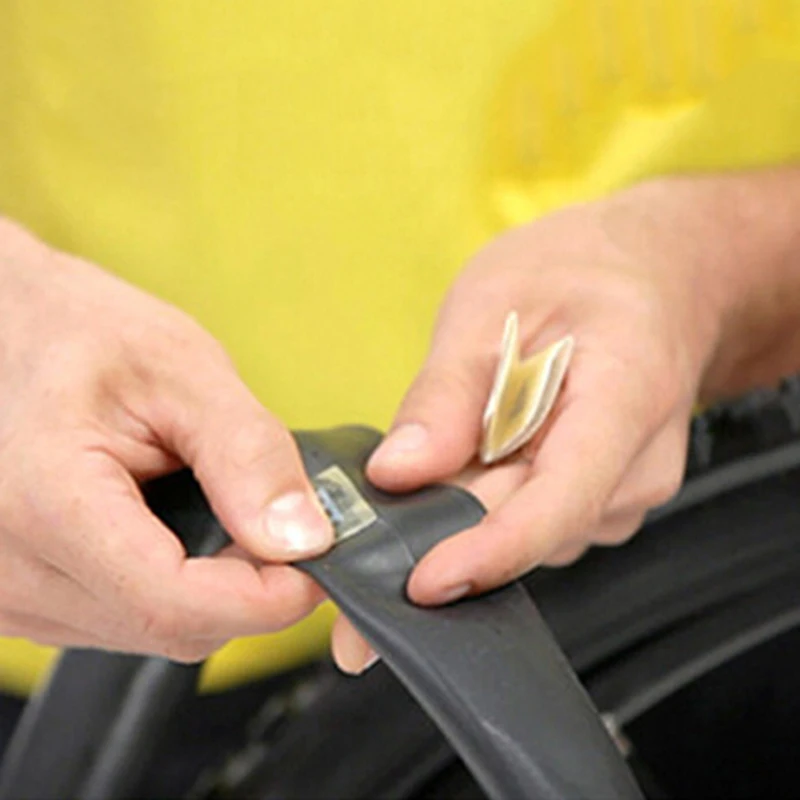
Plugs won’t usually work when a puncture is near the sidewall, as it likely won’t be able to completely seal the area. Plugs are also ineffective when the puncture is on an angle. Patches are usually the better-recommended option, but they do have their limitations. For instance, if a puncture is greater than a quarter-inch in diameter, a patch will likely be ineffective and the tire may be too damaged to repair.
What’s better – tire plugs or tire patches?Plugs, when installed correctly and in the right situations, can help a tire last for up to 25,000 additional miles.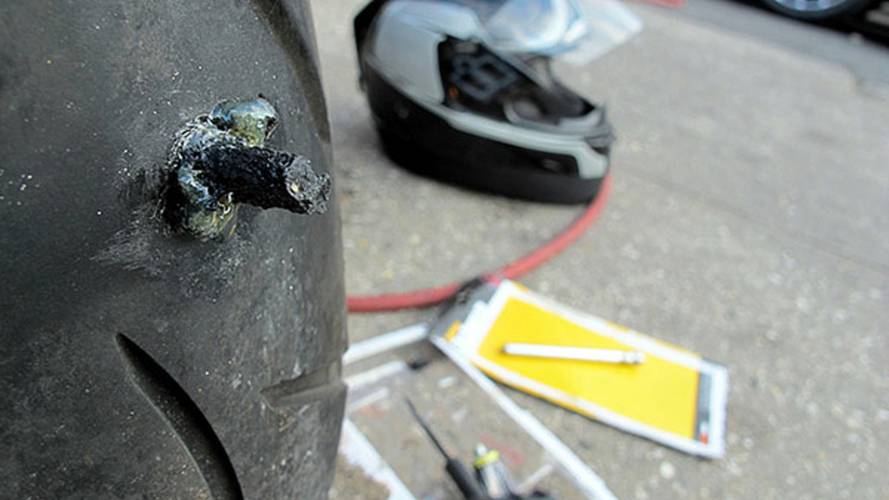 But while plugs can be effective, usually patches are considered to be the better, more secure option of the two. The patch/plug combo is the safest and most reliable option.
But while plugs can be effective, usually patches are considered to be the better, more secure option of the two. The patch/plug combo is the safest and most reliable option.
Yes and no. Years ago they were and if they aren’t installed correctly or in the right situations today, they still are. However, today’s plugs vulcanize to the tire and can help it last for tens of thousands of miles more.
JavaScript is disabled in your browser. For our website to function properly, you must enable JavaScript. If you do not enable JavaScript, certain features will not function correctly.
Store HoursToday: 08:00 am - 05:30 pm Closed Now
254-616-1659
97% of customers
would refer us to friends
4.94 stars - based on 271 reviews
254-616-1659
Phil's Service
503 S 2nd St
Killeen, TX 76541
05
Feb,
2018
Some of us can remember the days before tire plugs and a patch was the most common repair for a punctured tire.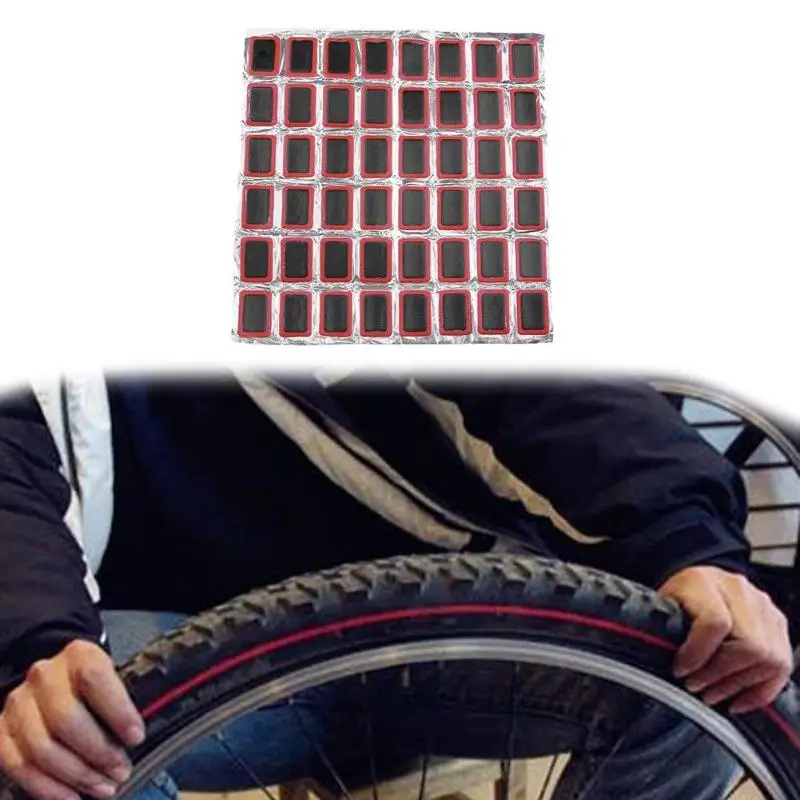 But times have changed and patches are not the only fix for flat tires. For those lucky few whose tire repairs required a patch or plug rather than a complete tire replacement, you might be wondering "How long does a patch last in a tire?"
But times have changed and patches are not the only fix for flat tires. For those lucky few whose tire repairs required a patch or plug rather than a complete tire replacement, you might be wondering "How long does a patch last in a tire?"
A tire plug is a sticky, expandable substance that gets stuffed in a hole in the tire from the outside and is wedged in until the air stops leaking out. The plug should easily stay intact well enough to re-inflate the tire and get safely to a repair shop.
Most tire repair specialists feel there is a better option for plugging tires. It's called a radial patch. Radial patches are specifically designed to repair radial tires which are used on most of the vehicles on the road today. Patching a tire with a radial patch can take about 20 to 30 minutes while installing a plug takes only a few minutes and usually can be done while the tire is still on the car. Often, it is necessary to vulcanize the tire patch, a process which uses heat and curing agents to reinforce the rubber of your tire.
Often, it is necessary to vulcanize the tire patch, a process which uses heat and curing agents to reinforce the rubber of your tire.
On average, tire experts predict that a proper plug and patch can last from seven to ten years. Although tire patches can last a long time, a tire should never be patched more than once. It can negatively affect the speed rating and potentially cause blowouts.
Whenever your tire becomes punctured and requires a repair, consult your tire service center and let them determine what type of repair is needed and what is best for the life of your tires.
Want to know more about how to save your tires? Contact our ASE Certified technicians at Phil's Service today for more information about tire repair and to schedule an appointment. Our auto shop proudly serves residents in the community of Killeen, TX, and surrounding area.
Wondering how long does a patch last in a tire? To find out more about tire repairs you might need to save your tires, Contact tire experts at Phil's Service
Some of us can remember the days before tire plugs and a patch was the most common repair for a punctured tire.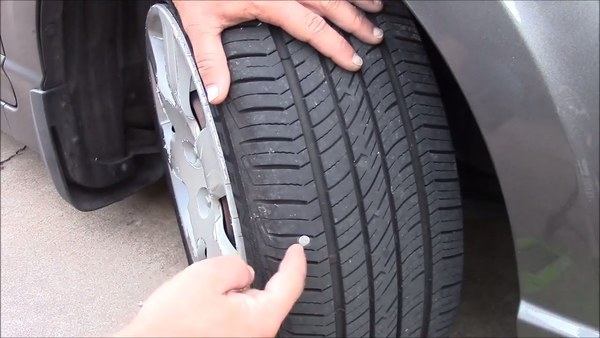 But times have changed and patches are not the only fix for flat tires. For those lucky few whose tire repairs required a patch or plug rather than a complete tire replacement, you might be wondering "How long does a patch last in a tire?"
But times have changed and patches are not the only fix for flat tires. For those lucky few whose tire repairs required a patch or plug rather than a complete tire replacement, you might be wondering "How long does a patch last in a tire?"
A tire plug is a sticky, expandable substance that gets stuffed in a hole in the tire from the outside and is wedged in until the air stops leaking out. The plug should easily stay intact well enough to re-inflate the tire and get safely to a repair shop.
Most tire repair specialists feel there is a better option for plugging tires. It's called a radial patch. Radial patches are specifically designed to repair radial tires which are used on most of the vehicles on the road today. Patching a tire with a radial patch can take about 20 to 30 minutes while installing a plug takes only a few minutes and usually can be done while the tire is still on the car. Often, it is necessary to vulcanize the tire patch, a process which uses heat and curing agents to reinforce the rubber of your tire.
Often, it is necessary to vulcanize the tire patch, a process which uses heat and curing agents to reinforce the rubber of your tire.
On average, tire experts predict that a proper plug and patch can last from seven to ten years. Although tire patches can last a long time, a tire should never be patched more than once. It can negatively affect the speed rating and potentially cause blowouts.
Whenever your tire becomes punctured and requires a repair, consult your tire service center and let them determine what type of repair is needed and what is best for the life of your tires.
Want to know more about how to save your tires? Contact our ASE Certified technicians at Phil's Service today for more information about tire repair and to schedule an appointment. Our auto shop proudly serves residents in the community of Killeen, TX, and surrounding area.
Ron Phillips
Ron Phillips
 com
comMon:08:00am - 05:30pm
Tue:08:00am - 05:30pm
Wed:08:00am - 05:30pm
Thu:08:00am - 05:30pm
Fri:08:00am - 05:30pm
Sat:Closed
Sun:Closed
Facebook Blog Google Instagram Yelpamerican express, mastercard, visa, discover, cash, napa easypay, direct debit, voyager network, ari, wex fleet, easypay, voyager, wex
Perhaps no responsible driver will set off on a journey without a "reserve" - you never know what surprises prepared by Mrs. Fortune and our notorious roads. However, the spare tire takes up a significant amount of space in the trunk, and you don’t want to bother with a replacement because of any trifle. That is why more and more modern motorists, in addition to a first aid kit, a fire extinguisher and tools, are purchasing special first aid kits for a punctured tire - repair kits and tire sealants. We will look at how these miracle remedies work, how to use them and what to look for when choosing, in this article.
Tire repair kit and sealant - an alternative to a spare tire or an addition?
To begin with, both the repair kit and the sealant are devices for restoring the integrity of the tire in an emergency. It is emergency - you can drive on tires “patched” in this way not far, on average, no more than 15 kilometers (exceptions are only the smallest punctures). It is important to understand: the main "mission" of all repair kits is to allow the motorist to easily reach their destination or service station, where professionals will take care of the affected wheel.
However, the common purpose is, perhaps, the only thing that unites the repair kit and sealant. Since in everything else: composition, principle of action, method of application - these useful inventions differ greatly.
DIY Tire Repair Kit: DIY Patch
The Classic Tire Repair Kit is a set of tools and accessories for DIY manual repair of a punctured tire or tube. The “magic” case includes: a tool for expanding the puncture (awl), a tool for inserting a tourniquet, a set of tourniquets made of rubber or nylon fibers, a knife. The mechanism of operation is very simple: first you prepare the puncture site, giving it the desired size and shape, and then literally plug the hole with a tourniquet. Rubber bands are stronger and more durable, however, during installation, they must first be lubricated with glue (as a rule, in such cases, the type of glue is indicated in the instructions for the repair kit). After the "patch" is delivered, you will need to restore the pressure in the tire - and that's it, you can go!
The “magic” case includes: a tool for expanding the puncture (awl), a tool for inserting a tourniquet, a set of tourniquets made of rubber or nylon fibers, a knife. The mechanism of operation is very simple: first you prepare the puncture site, giving it the desired size and shape, and then literally plug the hole with a tourniquet. Rubber bands are stronger and more durable, however, during installation, they must first be lubricated with glue (as a rule, in such cases, the type of glue is indicated in the instructions for the repair kit). After the "patch" is delivered, you will need to restore the pressure in the tire - and that's it, you can go!
IXORA recommends: Tubeless Repair Kit in AIRLINE Case – This handy, stylish kit includes everything you need to repair any tubeless car tire. The kit includes: tools with “file” and “needle” tips, a replacement needle tip, 20 raw rubber bundles, a knife, a hexagon and the plastic case itself, which allows you to compactly remove and transport all the contents.
Tire Sealant: Spare can
A completely different story with sealants. They are special solutions that envelop the hole from the inside and form a dense film at the puncture site or simply "clog" the hole. The difference in composition: some sealants are based on latex, which instantly hardens upon contact with air, while others have synthetic or natural fibers in the structure, which fill the hole.
According to the scope of application, sealants are preventive and repair. As the name implies, the former are used in intact wheels to prevent possible punctures (for example, if the car runs over a nail, the sealant pumped into the tire will automatically close the puncture so that the driver will not notice the incident). As for repair sealants, they are designed specifically for the “treatment” of already damaged tires.
How tire sealant works
The principle of operation and, accordingly, the algorithm for working with sealant is as follows:

However, be aware that sealant is not a panacea, it is a serious drug that can have a strong effect on wheels. So, for example, if you violate the speed limit (after using a repair sealant, it is not recommended to drive faster than 50 km / h), you risk “earning” wheel imbalance due to the fact that the sealant can “gather” into clots. Therefore, before use, carefully read the instructions and follow all the instructions: wheels are safety, and jokes are bad with safety.
How to choose a tire sealant
When choosing a sealant, pay attention to the following criteria.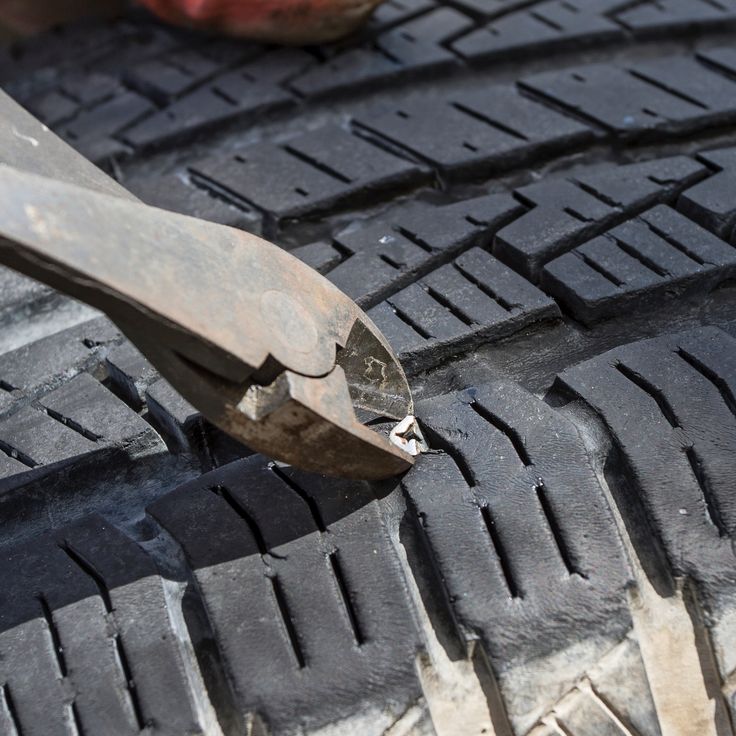
IXORA recommends: GUNK and MOTUL Tire Repair Sealants - modern effective aerosols that allow you to restore the integrity of both tubeless tires and tubes in a matter of minutes. The compositions are universal, easily cope with holes up to 5 mm, are absolutely safe and do not disturb the balance of the wheels.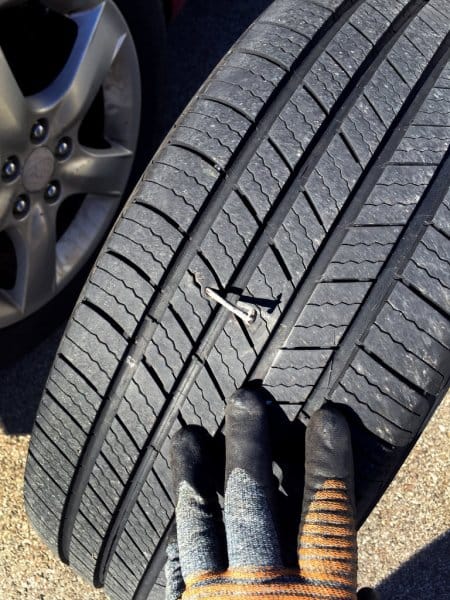
Why a sealant and repair kit should be in every car
Without a doubt, a repair kit and sealant are indispensable tools, especially if you have a long road ahead of you. Changing a wheel on the side of the road in the wilderness and driving around dusty country roads in search of at least some kind of tire service? Or bring along an emergency kit and a can of liquid "reserve"? I think the choice is obvious.
And finally: a general tip for working with repair kits and sealants - both of them are most effective for sealing small punctures (about 5 mm, some sealants up to 10 mm, but no more!). In addition, the sealant will be useless if the damage occurs not in the tread area, but, for example, on the side. Therefore, it is reasonable to have options in the trunk for both cases: a repair kit for manual repairs, and a sealant - especially since the price of the issue is more than affordable, and the benefits are obvious.
You can always buy a repair kit and sealant for tires, as well as pick up any other spare parts and accessories in the hypermarket network IXORA . Our staff will be happy to help you with your choice!
Our staff will be happy to help you with your choice!
You can get professional advice when choosing a product by calling 8 800 555-43-85 (free call within Russia).
In this section we will show you the most popular types of tire repair.
| 1. Tire repair with HARNESS.
ADVANTAGE: The harness can be installed even without removing the wheels from the car. This is a cost-effective tire repair option that does not take time and does not require wheel balancing. Minimum operations on the wheel, respectively, low cost of work.
LACK: The tourniquet is still a makeshift. Indispensable on the track in the distance from professional tire fitting. RECOMMENDATIONS: Any operation with car wheels should be entrusted to professionals who have the necessary set of modern repair tools. Trust us with your safety. | |
| 2. Radial patch. Radial patch is indispensable for the repair of through-hole punctures in the tread of a tire with a slight damage to the cord. The patch is made of durable flexible rubber. The adhesive layer has excellent adhesion, which in combination with a special adhesive gives excellent results! A wide range of tire repair patches will save almost any tire. | |
| 3. Perhaps the best option for repairing a puncture tire. The leg of the fungus reliably clogs the through hole, and the cap enhances protection by fitting snugly on the inside of the tire. The only drawback, if we talk about it at all, is the inability to close a puncture going diagonally. Like Radial Patches, Fungus Patch works in combination with quality adhesives and sealants. Shishomontazh in VAO has a full set of tools for repairing wheels with the "GRIBOK" patch. trust us with your tires. | |
| 4. Radial cord patch. Repair of tires with severe cord damage, repair of side cuts, repair of cuts in combination with hot vulcanization. The cord patch is made using a thread that is elastic in tension, which makes it possible to reliably strengthen the damaged surface of the wheel. Of the shortcomings - heavy weight, requiring partial balancing. Tire fitting in VAO will carry out any complex repair of your tires! |
General.